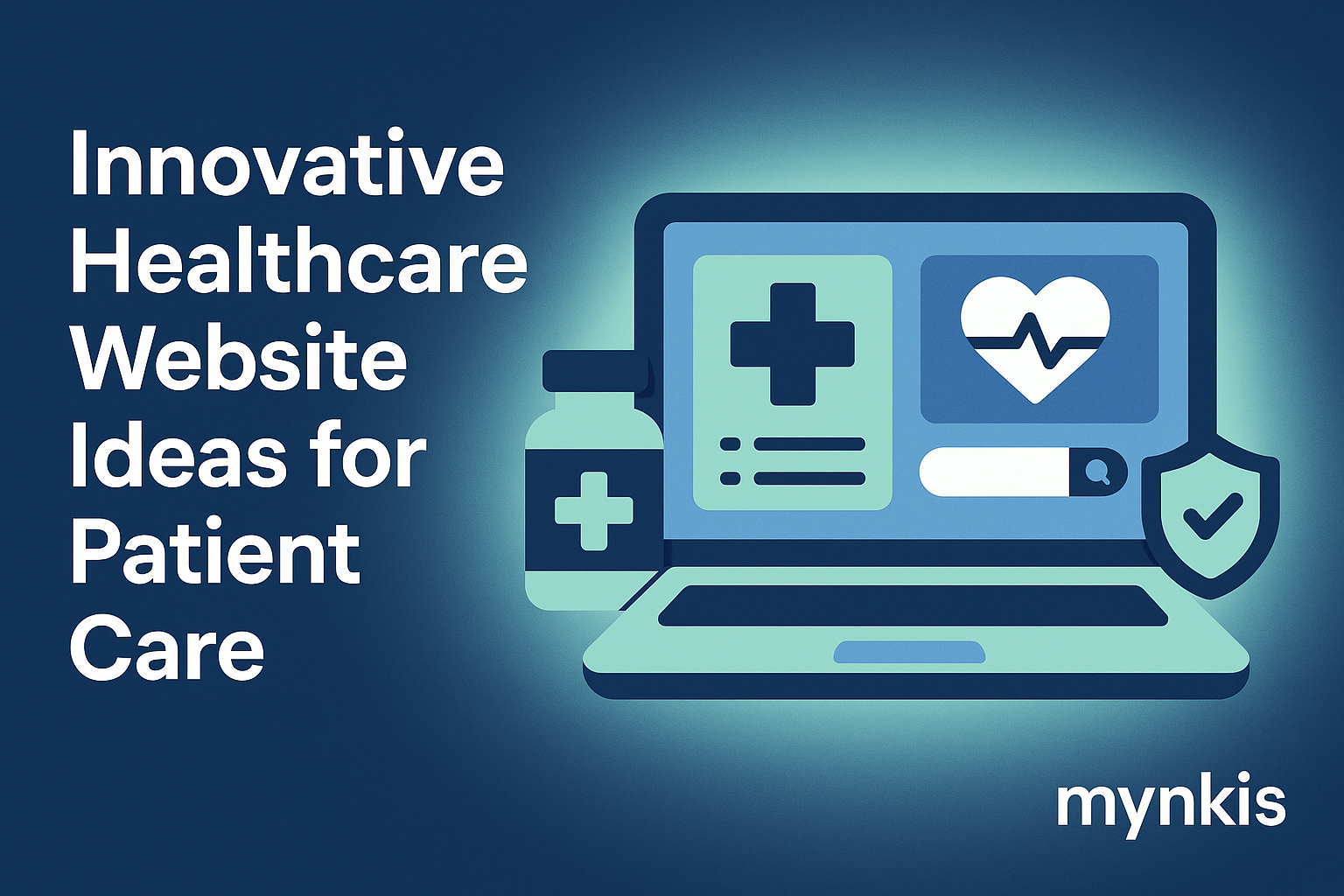Schedule a Demo
The shift towards digitalization in healthcare isn't just a trend; it's a fundamental change that can enhance patient care and streamline operations. In my work with operations managers across clinics and hospitals, I've seen how integrating advanced web solutions can truly transform the patient experience. Whether it's through implementing secure, HIPAA-compliant websites or developing custom patient portals, the right tools can make a significant difference.
One of the most crucial aspects of healthcare in the digital age is facilitating easier access to medical records and appointment scheduling. A well-designed patient portal isn't just a convenience; it's an essential tool for empowering patients. These portals should be intuitive, secure, and integrated with existing systems to ensure a seamless experience. In my experience, patients appreciate the ability to access their health data at any time, making them feel more connected to their healthcare journey.
Patient education is paramount in modern healthcare, yet it's often overlooked in the digital space. By incorporating engaging, interactive modules into your website, you can enhance patients' understanding of their conditions and treatments. These can range from videos to infographics and quizzes, all tailored to the patient's level of understanding. It's a proactive approach that not only informs but also empowers patients to take better care of their health.
The inclusion of telemedicine capabilities on a healthcare website is no longer just an option; it's a necessity. Integrating telehealth services allows for remote consultations, reducing the need for physical visits and enhancing access to care, especially for those in rural areas or with mobility issues. In my interactions with healthcare executives, the seamless integration of telemedicine has proven to be a game-changer, promoting continuity of care and patient satisfaction.
When it comes to healthcare, data security isn't just important—it's non-negotiable. Any website or software developed for healthcare needs to be HIPAA compliant, ensuring that patient information is protected against unauthorized access. This requires robust encryption and secure hosting solutions. It's not enough to just say it's secure; we must demonstrate it through transparency and ongoing security audits.
In today's world, many patients use mobile devices as their primary means of accessing online services. Therefore, healthcare websites must be optimized for mobile use. A responsive design ensures that whether a patient is accessing your site on a smartphone or tablet, they'll have a smooth and efficient experience. Based on my observations, a mobile-friendly website significantly increases patient engagement and satisfaction.
The ability to schedule appointments directly through the website is a convenience that patients have come to expect. An integrated appointment system can reduce administrative burden and improve the patient experience. From selecting available timeslots to receiving reminders, the entire process should be user-friendly and efficient. I've worked with several clinics that have seen tangible improvements in patient retention by simplifying the scheduling process.
With the rise of wearable technology and health apps, patients are increasingly interested in tracking their health metrics. A healthcare website can leverage this by offering personalized health tracking tools. Whether it's monitoring diet, exercise, or vital signs, giving patients the tools to track their progress can foster a more proactive approach to health management. This feature has been widely appreciated in the clinics I've collaborated with.
In an increasingly diverse world, offering multilingual support on your healthcare website can be a significant advantage. This enhances accessibility for non-English speaking patients and broadens your potential patient base. From Spanish to Mandarin, ensuring your website can communicate in multiple languages not only broadens your reach but also builds trust among diverse communities. As I've noted in my projects, this approach can significantly increase patient engagement.
Allowing patients to leave feedback and reviews directly on your website can provide invaluable insights into their experience. A transparent feedback system not only helps you identify areas for improvement but also increases transparency and builds trust with prospective patients. In the past, I've implemented similar systems that led to immediate improvements in service delivery based on patient feedback.
The integration of AI-powered chatbots can revolutionize how patients interact with healthcare services. These chatbots can answer frequently asked questions, assist with scheduling, and even triage minor health concerns. They provide a round-the-clock service that can greatly enhance the patient experience. From my experience, the implementation of chatbots has resulted in both increased patient satisfaction and operational efficiency.
Another valuable feature for a healthcare website is an interactive symptom checker. This tool allows patients to input their symptoms and receive preliminary guidance on potential health issues. It's a step towards empowering patients to take an active role in their healthcare, although it should always encourage them to seek professional medical advice when needed. I've seen how this feature can alleviate anxiety and enhance patient engagement.
Ensuring that your healthcare website meets accessibility standards is essential for providing an equitable service to all patients. This includes following the Web Content Accessibility Guidelines (WCAG) to ensure that people with disabilities can fully access your site. From screen reader compatibility to keyboard navigation, these standards should be at the forefront of your design considerations. As I emphasize to clients, an accessible website isn't just good practice; it's a requirement for inclusive healthcare.
Beyond the basic services, a healthcare website can serve as a hub for community and support. By integrating forums or support groups for various health conditions, patients can find a sense of community and encouragement. This not only enriches the patient experience but also leverages the power of peer support in health management. In clinics where I've facilitated these platforms, there's been a notable increase in patient satisfaction and engagement.
